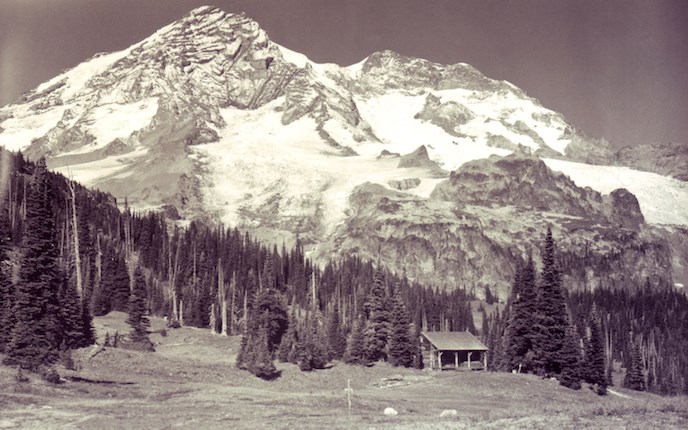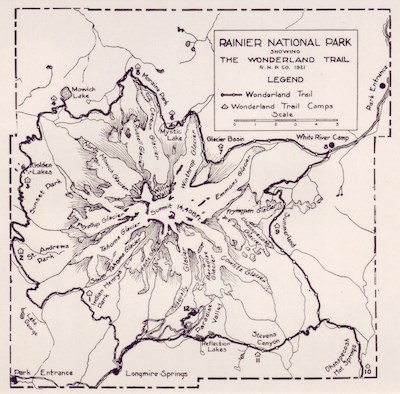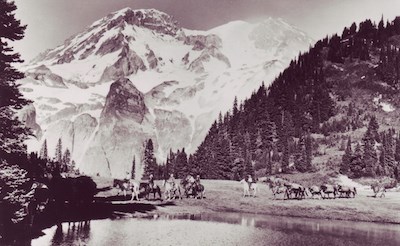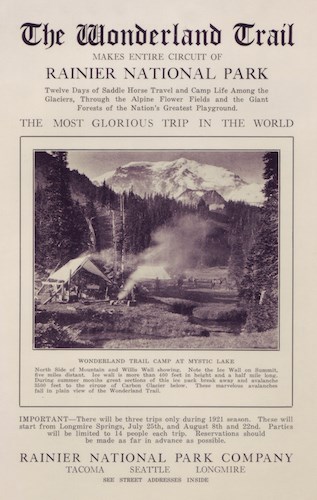At first, mountaineering groups and patrol rangers were virtually the only travelers on the Wonderland, in part because parts of the route was not suitable for tourist travel. In the 1920s, the park began trail improvements, including shortening the length, to make it more attractive for recreation and to everyday visitors. In fact, the name "Wonderland" was first attached to the trail in 1920 because the superintendent and the park concessionaire had begun promoting it as a tourist destination. The Rainier National Park Company issued a 1920 publicity bulletin that advertised the "new Wonderland Trail" as one of the highlights of any trip to Mount Rainier. The company also offered a guided saddle and pack horse trip along the trail, which it called the "most glorious trip in the world".
Along with The Mountaineers, the Boy Scouts of America was the other organization closely associated with the early recreational use of the Wonderland Trail. The idea that a wilderness sojourn could recreate the simpler American past of the pioneers became, for organizations like the Boy Scouts, a prime motivation in undertaking a Wonderland pilgrimage. Puget Sound area Scout troops began taking Wonderland trips in the early 1920s, usually spending two weeks in the park traveling a part of or all of the trail. The hundred-mile circuit around the majestic Rainier was the ideal place for local Scouts to obtain their hiking and camping skills, and to live out their Scouting ethos.




